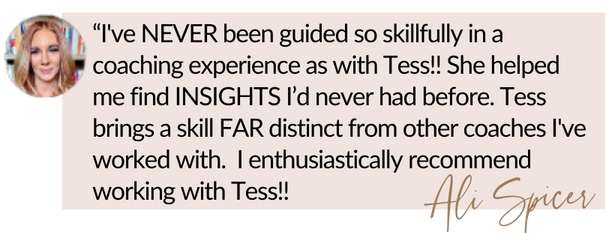inWe never know what is coming yet struggle letting go of the future.
We know we do not control the future but act like we can by working harder or moving faster.
Like walking in the mist, we want to know what is next.
Sometimes the mist hides obstacles in our path, sometimes we lose our way and other times we see clearly.
We try to avoid what is ahead by veering off the path or running to get there quicker. But usually, we do not accomplish anything other than tripping or getting lost.
But when we patiently stand still and let things be what they are, like in a grounding practice, we make space to choose our actions, reactions, perceptions, and feelings.
Table of Contents
What Letting Go Creates

Letting go opens space for softness, peace, and the freedom to truly breathe again.
“Releasing the illusion, of control opens the door to something far greater.”
Releasing the need, or more accurately, the illusion, of control opens the door to something far greater.
When we stop gripping outcomes we cannot command, or stuffing down negative emotions, we create room to breathe, to feel, and to meet life as it actually is.
In that openness, we give ourselves the chance to:
-
Feel what we avoid. Rushing is often just a way of outrunning emotions we do not want to face.
-
Soften into vulnerability. Letting go invites tenderness and allows others to meet us more authentically.
-
Accept uncertainty with more ease. We no longer have to exhaust ourselves by predicting every turn.
-
Experience spaciousness and peace. With fewer battles against what cannot be changed, calm begins to expand.
There is a body-level component to this practice that I invite you to explore more deeply. But the questions in the following section will give you a beginning to that deeper healing…
The Cost of Control

Trying to control the uncontrollable only deepens stress. Clarity comes when you release the grip.
“…the harder we try to manage life, the more life feels unmanageable.”
When we pour our time, energy, and emotion into trying to manage what’s beyond our reach, it quietly drains us. Control promises safety but it delivers exhaustion. The more we grip, the more our nervous system stays on high alert, scanning for threats that may never come.
When we put our resources into something we cannot affect, it disempowers us. We lose perspective, creativity, and the capacity to handle our emotions. Control turns into a loop of tension: the harder we try to manage life, the more life feels unmanageable.
-
How many times has control or worry produced the effect I wanted?
-
What effect is this having on my relationships?
-
If I look back, how often has worry or control changed an outcome?
-
How does this strategy make me feel about myself?
-
Is this how I want to keep feeling?
An Empowering Shift
The empowering shift begins with curiosity. See the need for control as another part of you just trying to protect you. It wants what you want – the most important thing being: safety.
Then practice releasing your need to control by asking different questions: Instead of asking “How do I make this go my way?” try asking:
-
What is actually within my influence right now?
-
What happens in my body when I stop trying to force an outcome?
-
If I trusted that I could meet whatever comes, how would I show up differently?
This gentle reframe invites the nervous system to soften. It moves you from force to flow, from gripping to grounded-ness. Releasing control isn’t about giving up; it’s about returning to your power and confidence.
Letting Go of Avoidance

Belonging cannot be forced through control, it begins with letting yourself feel.
Belonging is a common trigger point: we all want to belong in some way.
“When we release the grip, life offers us space to breathe and soften.”
When we feel estranged or separated, our brains anxiously try to solve the problem they perceive so we do not have to feel sad or rejected. This ultimately makes us more anxious and angry.
When we avoid feelings in this way, we quietly tell our brains the feeling we are trying to bypass is dangerous.
But when you patiently let yourself feel sad, you can soothe the pain without anxiety. It is not so scary. The story your mind is telling you about it is worse than the emotion itself.
By accepting discomfort, you can slow things down enough to choose how you want to respond to it. That results in feeling less anger or fear.
It is feedback to the mind that feelings are temporary and because you weren’t invited to a party, doesn’t mean that you have been abandoned.
Each time you stay with a feeling instead of avoiding it, your nervous system learns it is safe to feel.
That’s how a new relationship with your feelings is created, one moment at a time…
→ GIFT with my Love ←
Would you like support as you practise this shift?
This 7 Days of Regulation mini-guide is a week-long experience of body-based prompts to calm your nervous system and build steadiness day by day.

Acceptance and Change

Acceptance is not passive but the calm foundation that allows real change to grow.
“When we learn to accept….life challenges become a game, not a measure of your worth or ability.”
Yes, it is scary. We fear not controlling everything, so we hold on to our controlling strategies to stay safe. But does it feel safer?
How good do you feel micromanaging unmanageable events or the lives of others? Do you feel happier or safer?
What if a change is essential?
Even then, letting the unpleasant event be what it is is not the same as enduring it or suffering its existence. Acceptance does not mean a lack of change.
You can still change the things you want to, set goals and keep achieving, but you will do it with less fear about the outcome.
Until you get the change you want, you start letting your current unwanted experience simply belong. The paradox is, you feel better when you accept what is happening. That doesn’t mean you don’t create change. The irony is that acceptance equips you to create change with less pain.
Instead of resisting where you are, you begin to spend more energy creating what you want with less attachment to whether it works out, and more excitement just to see if it will.
This way, life becomes a game, not a measure of your worth or ability.
You can still change the things you want to, set goals & keep achieving, but you’ll do it with less fear about the outcome.
Until you get the change you want, acceptance means you can let your current unwanted experience simply belong and you can stay safe.
If I Accept What Is, Will I Be Stuck?
We think accepting our circumstances disincentivizes changing, but criticizing or overworking ourselves never inspires change.
Change involves pain and discomfort, but we cannot suffer or blame ourselves into change.
Shame and blame make moving forward difficult, take longer, and will not provide change that lasts.
Take It to the Trees

Patience in nature teaches us to slow down, listen, and discover clarity in the mist.
My father taught me patience by communicating with nature. When we were in the woods, he modelled how to stop, listen, and hear what I could not before. Stop and look so I could see what I could not see before.
“As you slow down, the path ahead will become clearer &
your idea of one right way will dissolve into the mist.“
I still learn from those moments.
When I want to speed through life and get ahead, I stop and listen. I create space for wonder about myself, my responses, and my surroundings. I can see and hear again.
Wiser words and wiser choices become available and I know that I have tapped into the wisdom of acceptance.
We place vast limits on our intellect when we control, endure, rush, or resist.
The more we slow down and expand our vision, the more we connect with our ability.
Facing the Fear of Letting Go

Facing uncertainty opens the path to freedom and fear softens when you let go.
“Patience is not a virtue, it’s a learned skill.”
What if, instead of fearing lack of control, you accept that the crystal ball is an illusion.
Can you release the belief that control keeps you from being harmed, and see that it keeps you from being free?
Letting go is a practice of patience and frees us from the burden of control. Patience is not so much a virtue but more a learned skill. It is the advantage we give ourselves of slowing down and being ok right where we are.
Letting go lights the path in front of us. Every time we practise patience and letting go, we put down a heavy burden. Good and bad become neutral.
Layer by layer, keep taking off your need to know and step more slowly and purposefully more often.
Frequently Asked Questions
Q1 – Why is letting go of control so difficult?
Because the mind equates control with safety. Releasing control can feel like stepping into danger, even though it creates more freedom and peace.
Q2 – Does acceptance mean I stop trying to change things?
No. Acceptance is not passivity. It means you stop resisting what is present, so you can use your energy more wisely to create the change you want.
Q3 – How does patience help with control?
Patience softens the urgency to fix or force outcomes. It gives you space to notice, reflect, and act with intention instead of reaction.
Ready to begin discovering the quiet freedom of letting go?
When you allow yourself to loosen control, patience and clarity start to rise. This is the work we can explore together: finding steadier ground, softer choices, and more peace with what is.

🎁 A GIFT:
If you want to stay connected & learn more ways to produce thoughts that heal, not hurt you, click the link here to: Unravel Your Exhausted Mind
